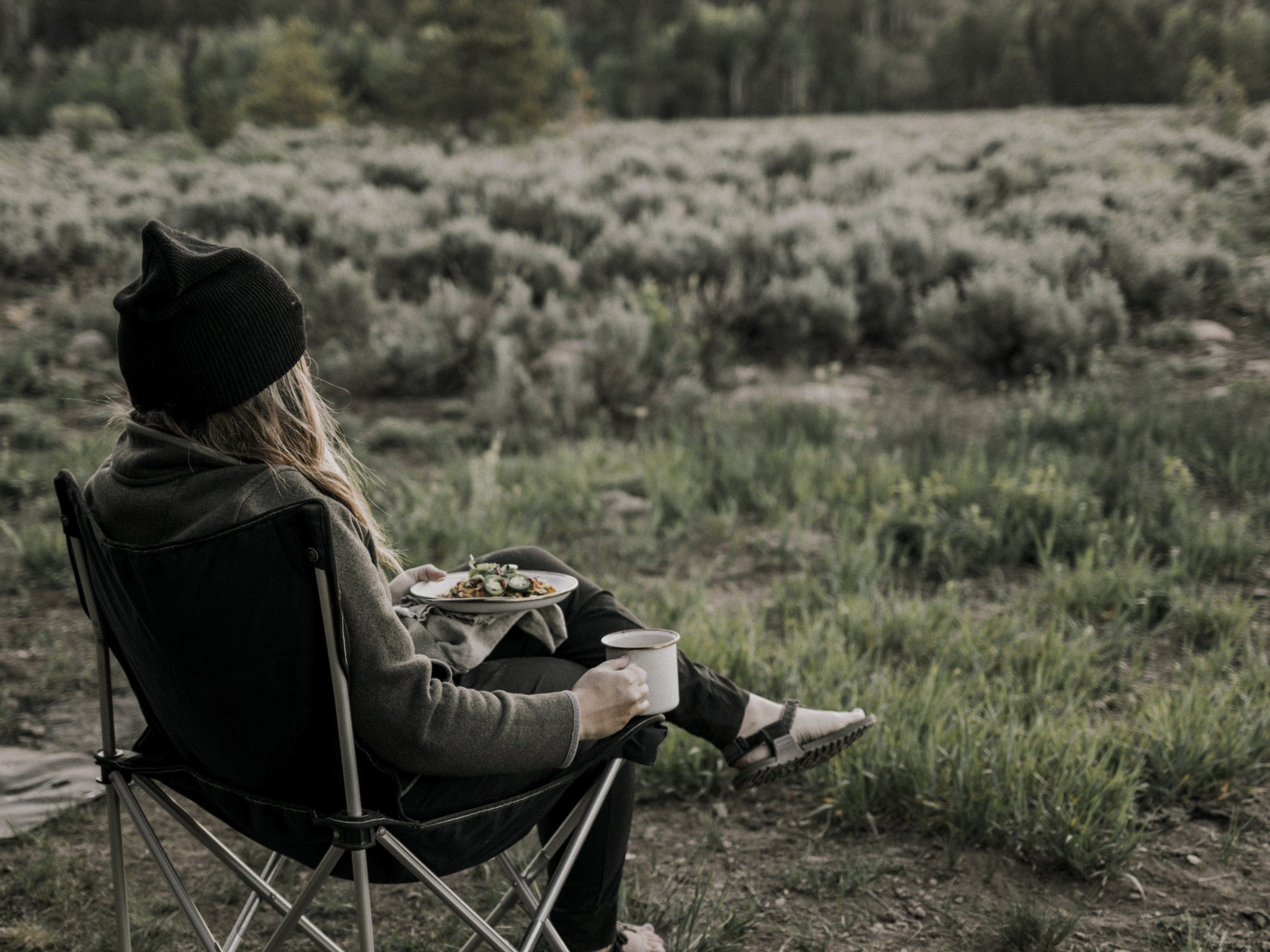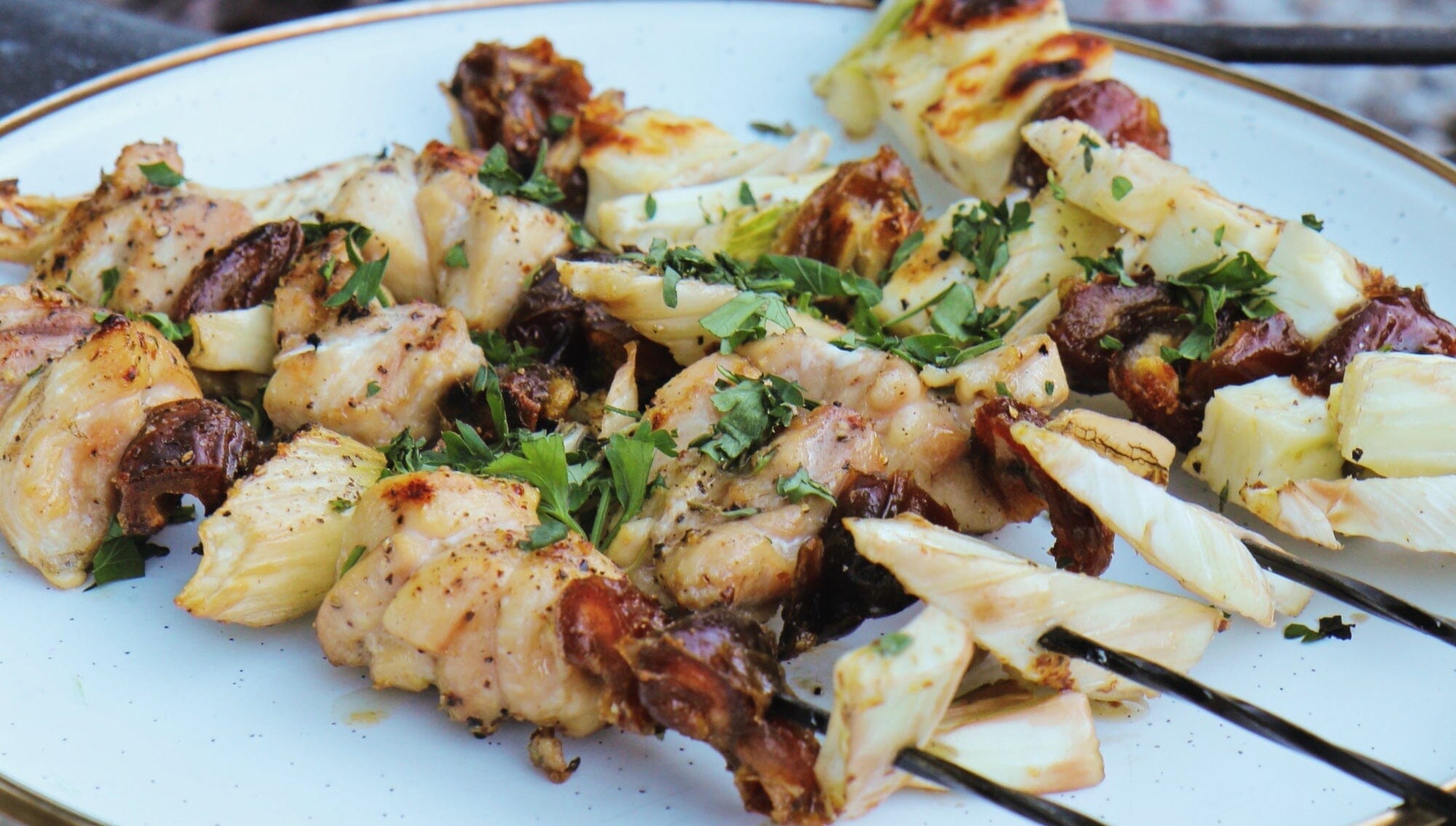By Brianne Dela Cruz, Gather & Grow
I’ve spent many days of departure loading up the camp cooler with too many ingredients to fit. At best, it’s a complicated game of Tetris, and, at worst, it’s an over-packed nightmare of perishables that go unused. It can be challenging to simplify our pack list and our cooking experience if we don’t strategically plan a camp menu ahead of time.

It wasn’t until I started venturing on multi-day river trips that I discovered the beauty of strategic menu planning. Floating for days on end, with a small amount of space to carry our food, forced me to be intentional about packing and using ingredients. Menu planning simplifies the camp cooking process and ultimately enables us to spend less time fretting and working and more time enjoying the great outdoors. I want to share some of the experiential wisdom I’ve gained for planning a simple (but elevated) camp menu.
Camp Menu Planning Tips
The key to planning a simple camp menu
is to develop multiple meals that use many of the same ingredients.
If you can use leftovers after a large meal, all the better. My method for coming up with a menu begins by thinking about meals in groups of three: dinner, breakfast, and lunch. I plan meals in that order because it’s easy to reuse leftovers for breakfast and lunch. Dinners are often the first meal we make after leaving town anyway, so I like to use the dinner recipe as my main inspiration for breakfast and lunch the following day.
Making a double batch of dinner also helps craft the other meals around the leftover (and already prepped) ingredients. Another way to simplify camp cook-life outdoors is to prepare ingredients as much as possible before leaving town. Not only is it a time-saver, but it saves loads of cooler space, too. I do this by marinating meat and mixing sauces the day before or the morning I leave town.
Another pearl of wisdom that helps to use food at camp:
set out the morsels of leftover dessert in the morning. Cobblers, cakes, and brownies always get gobbled up with coffee by the early risers the next day.

My last menu planning tip is for those that will be out in the wilderness for multiple days. Multi-day trips can throw a tricky wrench in the menu planning game, but a longer timeline doesn’t mean we can’t still enjoy elevated food in the wilderness.
For trips like this, plan the first set of meals using ingredients that don’t last long: thawed meats, berries, and tender greens. For meals later in the trip, use more non-perishable ingredients like beans and rice, cabbage and carrots, and deep-frozen meats or pre-cooked sausages.
Now that you know my best camp meal planning tips, I’m sharing a delicious sample camp menu with a minimal packing list for one set of three meals.
Each Vietnamese-inspired dish uses many of the same ingredients with just a few variations to keep it interesting. The serving amount for dinner is already configured for a large batch to ensure the leftover ingredients are prepped for the two other meals.
A Sample Camp Menu
Dinner: Grilled Pork Belly Noodle Bowl | Get Recipe >
Breakfast: Vietnamese Egg Scramble | Get Recipe >
Lunch: Soy Glazed Shiitake Banh Mi Sandwiches| Get Recipe >

Packing List to Serve 4
- 1 1/2 pounds pork belly, pre-marinated
- 16 shiitake mushrooms, pre-marinated
- 3 cups Vietnamese chili fish sauce
- 4 carrots, shredded
- 2 cups romaine lettuce
- 2 cups bean sprouts
- 1 large cucumber
- 3 jalapenos
- 1 bunch fresh mint
- 1 bunch cilantro, roughly chopped
- 1 ½ bunches green onions
- 12 ounces dried rice vermicelli noodles
- 8 eggs
- 4 sandwich baguettes
- Veganaise
- Sriracha
- Salt and pepper
- Cooking oil
ABOUT
Brianne Dela Cruz is a master gardener, wild forager, campfire foodie, and acclaimed writer and photographer. From her home in Salt Lake City, she teaches online gardening and foraging courses for modern folks and budding naturalists as well as hosts seasonal community gatherings. Brianne's blog and online school, Gather & Grow, is a community of folks exploring the intersection between nature and personal growth by discovering ways to slow down and nourish themselves with nature.



